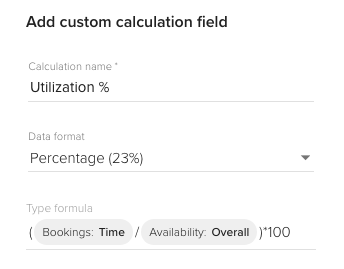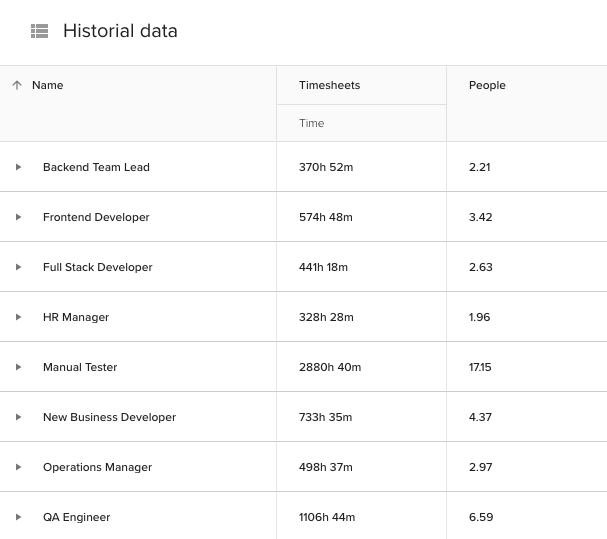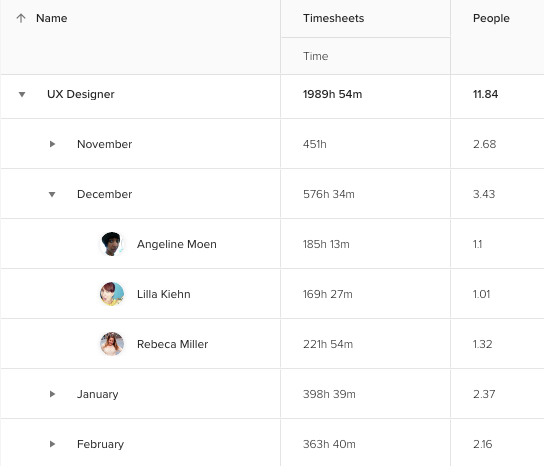As we can read below, accordingly to the Institute of Business Forecasting and Planning, every decision and action is based – not necessarily consciously – on resource forecasting. This article is based on the Office Manager and the Head of Finances’ experiences.
Article contains:
- A comparison of human resource forecasting definitions
- Team utilization forecast report
- Trend analysis and helpful role of the software di gestione delle risorse resource forecasting
Together with our guests, Piotr and Iwona, I want to show you that a resource planner can provide data to deepen this understanding and, as a result, make more confident forecasting choices.

Iwona Marciniak – Office Manager at Le Polish Bureau, the technical department of a renowned production company, UNIT9.

Piotr Bandosz – Head of Finances and People at Apptension, a 50-person creative software house based in Poznań, Poland.
Using history to predict the future – a few words before we’ll talk about HR forecasting
“(...) whether you realize it or not, virtually every business decision and process is based on a forecast.”
(Institute of Business Forecasting and Planning)
It is obviously true, that without the past, there is no future – lofty speaking. But saying more clearly, any prediction – in private life as well – is based on a mixture of data (taken from your own experience and given to you by colleagues or supporting tools) and imagination.

Creating the future or just implementing set goals, and overcoming tasks and challenges that will arise on the way to success, are always based on and contain elements such as data, and experience that help to solve problems and choose the right direction.
(...) forecasting is the attempt to predict future outcomes based on past events and management insight.
(WoltersKluwer.com)
Forecasting — whether we talk about the weather, human or animal behavior, financial, business, or just human resources — is the process of using data, insights, and experience to make predictions and preparations to meet a specific need, or business need – to put it bluntly.
How gather the data supporting HR forecasting decisions?
From the meaning to the action – understanding of HR forecasting
Having above in the mind, we can predict the meaning of HR forecasting.
HR forecasting or human resource forecasting is the process of determining or forecasting a company’s staffing requirements using existing data.
(the-definition.com)
In this sense, the stress is on ensuring enough and expected number and suitably skilled employees – expected from a company or business perspective. And the goal is to ensure continuity of business, achieving business needs just because of qualified employees.

This meaning is close enough to capacity planning – a very popular term among resource and project managers. For them, capacity planning it’s all about holding the right number of (properly trained and skilled) employees that might successfully finish the project or task.
Thus, human resource forecasting is...predicting demand and supply. It can refer to a number of workers, expected particular skills, or office equipment. In HR, forecasting means:
assessing employee numbers and calculating the skills, equipment, and resources needed to meet employee needs and reach business objectives.
(rovva.com)
Does it sound familiar when we compare the above to resource scheduling or even resource management definitions?
Summarizing this chapter, human resources forecasting is a process of predicting – based on data, company needs, and currently working for company employees and their engagement and productivity indicators – who should be employed. Employed in terms of mastery and workforce. Human resources forecasting is aimed at meeting the demands of future projects. At its heart, it’s an operation that requires the right understanding of what’s going on at your company.
Team utilization forecast report
Piotr is one of the OG Teamdeck users, having been with the app since its beta launch. No wonder he’s developed a couple of favorites when it comes to automating work and deriving value from the data. One of his go-to reports is a 3-month production forecast.
It’s based on the future availability of the team as well as project bookings that have been already assigned.

TIP: Use a feature called Add custom calculation field to create the Utilization column.

Holding the position of Head of Finance & People, Piotr is able to use this report for both aspects of his job. It gives him a solid overview of Apptension’s planned production pipeline: if the utilization values are lower than expected, he can have a word with the sales team and see whether there’s potential for more deals to be closed in the upcoming weeks.
TIP: You can label different kinds of bookings with tags, e.g. “tentative” for bookings that are not yet confirmed but some arrangements have already been made.
This simple table is also a good prompt for human resource forecasting
Piotr can analyze the utilization of particular people or departments. This way, he knows which roles will be in high demand shortly, and can plan recruitment processes accordingly.
TIP: Custom fields work as tags for projects and people in Teamdeck. They make it easier to sort your data in categories e.g. departments. Both Iwona and Piotr have added a “job title” tag to their teammates in order to filter them by skills.

Looking at the table above, you see that even though the Creative department as a whole seems to be reasonably utilized for the upcoming months, drilling the data down shows that we could use some copywriting help, as Luisa has a lot on her plate.
The 3-month forecast is also helpful when it comes to assessing whether a given role will be needed for a longer period of time or it’s a short gig better suited for a freelancer.
Human resources forecasting based on historical data
Iwona points out that access to historical data is also extremely useful when trying to optimize future hiring processes. Analyzing data from the past months and years allows to spot trends in data and make more accurate predictions. For example, certain skills turned out to be in higher demand in particular months. Now that the team is able to forecast an upcoming recruitment need, the process can be planned beforehand.
If you don’t have enough data to analyze previous years, looking at the recent history can help you too. The historical data report is based on people’s timesheets, and, as Iwona herself admits, “took about 5 minutes to prepare”.

There are three columns in Iwona’s report:
- categories of employees based on their job titles, after expanding each category you can see months and then people (use the grouping option to be able to put data in that order)
- timesheets pulled directly from Teamdeck – software di gestione delle risorse
- number of people needed to deliver the number of hours tracked in the second column
TIP: The column People is the so called custom calculation and the formula follows:
People = Timesheets / 60 / 168
Why 168? That’s the average amount of hours in the working month. This number can differ country to country – use the value that makes the most sense in your case.
This report is really insightful when you expand the rows and compare the workload per month with the number of people you actually have on board.

What you see in the picture is a breakdown of timesheets per month of a fictional UX team. There are three people on board, and for most of the time, it’s just the right amount to complete the work (the value of the People column doesn’t exceed 3). December, however, seemed to be very busy for the UX team. All of the team members have logged more time than usual and the calculation shows that more than 3 people (3.43 actually) would be needed to complete this work within the regular timeframe.
It could be the case that this particular December was extraordinarily busy or perhaps it’s an emerging pattern. Anyway, you have every reason to watch the workload of UX designers closely and plan new hires if necessary.
TIP: Timesheet reports are also a great base for calculating the payroll of your employees.
Challenges of HR forecasting and how to respond to them
There are multiple factors to consider when it comes to planning resource demand at agencies. Things change fast here, both in terms of new projects in the production pipeline and the new skills needed to deliver them. You have to make a decision whether you’re looking for people to join your team or contribute to projects as freelancers. Then, of course, there’s the cost of the actual recruitment process.

What about the consequences of poorly timed hiring processes? Overstaffed agencies can easily lose their financial liquidity but not having enough resources may jeopardize the upcoming projects or damage carefully crafted client relations. Clearly, there’s a lot at stake here.
Fortunately, reliable data about:
- confirmed (or basically-confirmed-waiting-for-the-final-go) projects, their estimated duration, and roles needed to deliver them,
- future availability of your teammates,
- past records: timesheets, utilization, estimates vs actuals,
will help you tremendously. Data-driven human resources forecasting starts with collecting the appropriate insights, preferably in real-time. Analytics presented in this article have been captured by Teamdeck, software, that has been tailor-made to support agencies, software houses, and startups in project resource management.
Already have an account? Go to the reports section and create your own analytics dashboard.
New to Teamdeck? Setting up an account is free and takes just a couple of minutes.


